Weekly wild news from our reserves – 3 December 2021
Snow at Bradfield Woods - Alex Lack
The West Suffolk team have been milling ash at Bradfield Woods this week. Bradfield Woods is a unique working wood that has been under continuous traditional coppice management since 1252, fulfilling local needs for hazel products and firewood. Coppicing is a traditional method of woodland management where stems are cut at ground level promoting vigorous re-growth. Coppice rotation lets light to the ground enabling wild flowers to flourish.
Ring-tailed hen harrier
A female hen harrier has been seen above Blaxhall Common this week; females are known as ring tailed due to their distinctive tail bands. We didn’t manage to get a snap of this particular bird, but here is an image of one to show the beautiful tail markings.
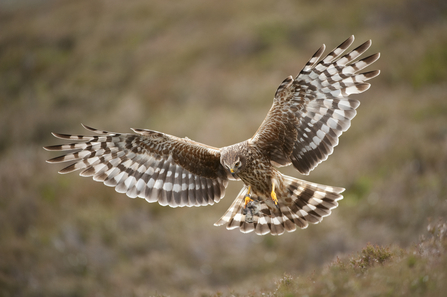
Female hen harrier – Mark Hamblin
Wintry wonderlands
Many of our reserves saw a dusting of snow this week.
Bradfield Woods is one of Britain’s finest ancient woodlands and a glorious haven for wildlife, and it had a hint of Narnia this week in the frosty conditions.
Church Farm boasts a mosaic of habitats including grazing marsh, meadows, dykes, hedges and woodland and it looked white and crisp this week.
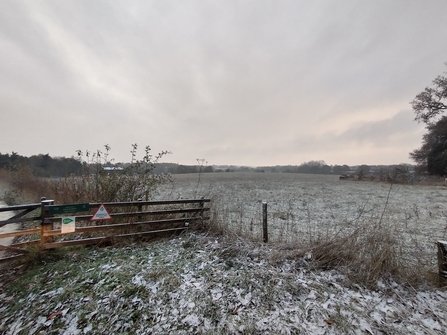
Church Farm - Jamie Smith
Black Bourn Valley also had a touch of snow this week. We have been ‘wilding’ this reserve by taking fields out of arable farming and allowing nature to take over resulting in an impenetrable thicket of hawthorn, blackthorn and dog rose – perfect for flocks of redwing and fieldfare in winter.
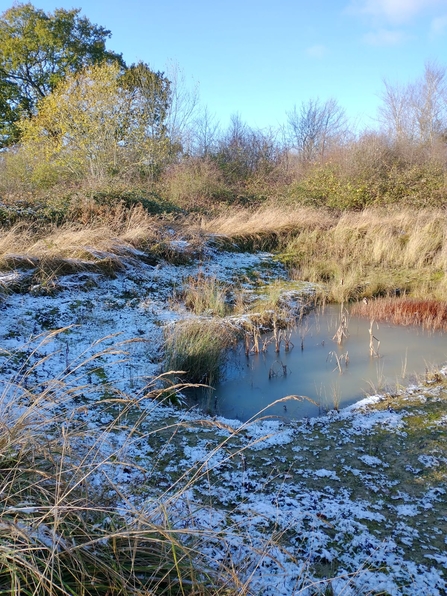
Snow at Black Bourn Valley – Michael Strand
Double rainbow
The skies at Trimley Marshes are equally dramatic come rain or shine, as shown by this double rainbow in the dark of a storm this week. Whether it is rafts of duck, colonies of avocet or the razor-like wings of a peregrine in stooping flight, the sheer number of birds that Trimley Marshes attracts is nothing short of spectacular. The reserve is also perfect habitat for mammals including Chinese water deer and hare.
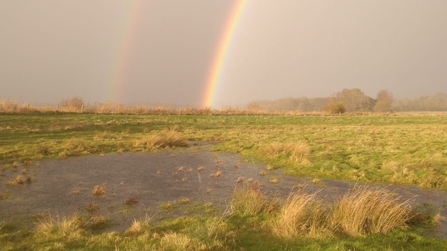
Trimley Marshes - Andrew Excell
Common bonnets
These common bonnet fungi were spotted at Lackford Lakes this week. Common bonnets mainly grow on the damp, decaying wood of broadleaf trees. Lackford Lakes is fantastic for fungi spotting at this time of year. Look out for starling murmurations and kingfishers too if you visit!
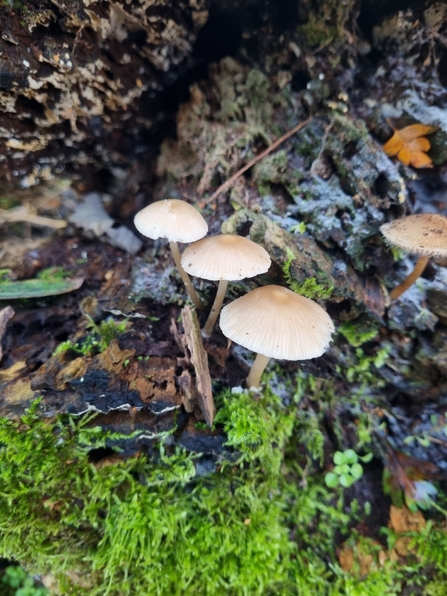
Common bonnets at Lackford Lakes - Joe Bell-Tye







